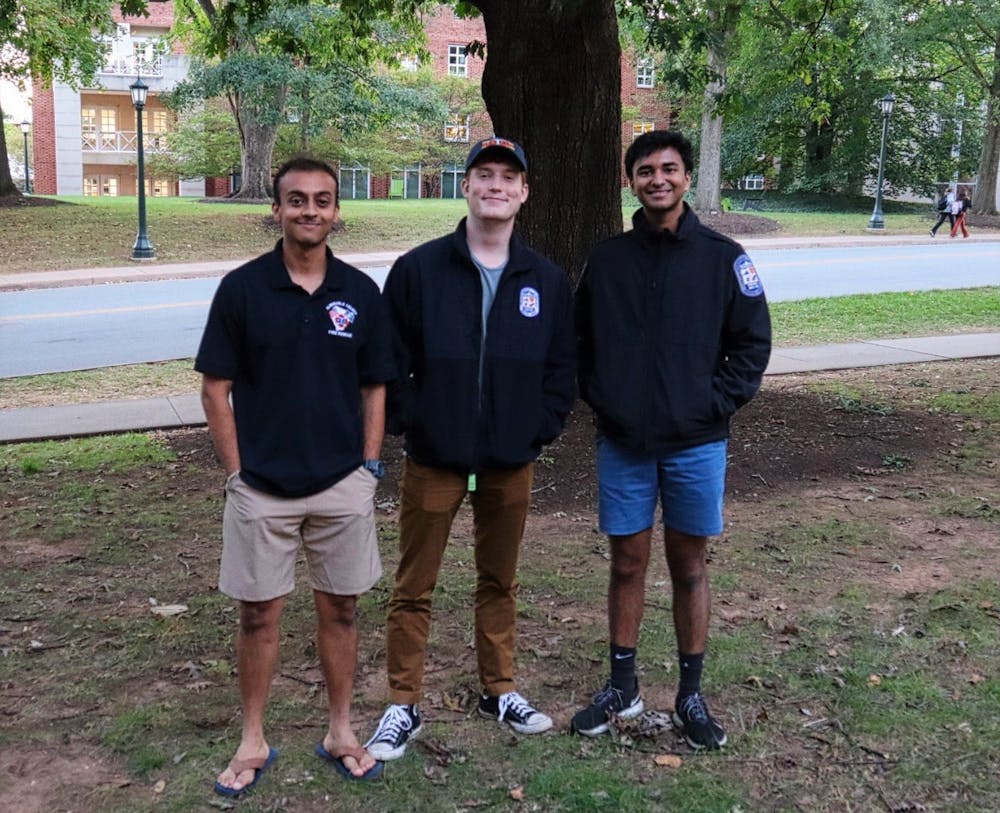Many students at the University serve as first responders in addition to being full-time students, working and training tirelessly to keep the community safe. Medical students, nursing students and students across the University play a crucial role in the operations of local rescue squads and fire departments.
Albemarle County is home to 15 rescue organizations made up of volunteer and career first responders. The rescue squads include fire stations, EMT services and hazmat teams — combined, the 15 squads respond to over 16,000 calls per year.
Kostas Alibertis, chief of the Western Albemarle Rescue Squad and a 1985 alumnus, started at the station in 1985 while an undergraduate student at the University. At the time, Alibertis was one of a handful of University students who volunteered at the station. 30 years later, students play a major role in the squad, and more importantly, in the greater Charlottesville community.
The Western Albemarle Rescue Squad is located in Crozet and provides advanced life support to residents of Albemarle County. The squad consists of over 100 volunteers, about 25 percent of whom are current students or recent graduates from the University, Alibertis said. The group’s average call volume each year is around 2,000.
Volunteering as an EMT is a significant time commitment for full-time students — they must keep up with training, work long shifts and assist in high-stakes medical situations.
“It’s a fairly intensive process to onboard someone,” Alibertis said. “At a minimum, we want folks for 18 months to two years.”
The Western Albemarle Rescue Squad has high standards for their squad. Not only are they expected to commit to the program, but they are also held to high standards of care and composure.
“Truly this is a job ... it's not a hobby that you can do when you have time to do it,” Alibertis said. “You have to sort of be dedicated to it, because the service we provide is at a very professional level and we have a very high standard.”
The time commitment as an EMT does not stop when the school year stops — student-EMTs are expected to work on school breaks and holidays during their time at the station.
“Folks don't stop calling 911 because it's Thanksgiving, and they don't stop calling because it's Christmas Day,” Alibertis said. “The expectation is that if you accept the challenge and responsibility for becoming a member … you also accept the understanding that we won't stop running calls because it's spring break.”
Walker Smith, a Class of 2020 and 2021 alumnus, commutes from his job as an engineer in Northern Virginia to Charlottesville on weekends to volunteer as a firefighter with the Seminole Trail Volunteer Fire Department. Smith joined the fire station as an undergraduate at the University. A coworker in his undergraduate research lab would tell stories of his nights at the fire station, which sparked Smith’s interest.
Similar to that of the Western Albemarle Rescue Squad, firefighting at Seminole Trail Volunteer Fire Department is a serious commitment. Volunteers are expected to complete one 12-hour shift a week and one 48-hour shift every five weeks. The total time commitment is approximately 100 hours per month, Smith said.
Though the time commitment may seem daunting, Smith said the work itself is profoundly rewarding for volunteers, who are imprinting on the individuals they serve and the community as a whole.
“Every now and again, you'll get a call where you really help someone,” Smith said. “They'll come back to the station or at least write a letter or something, and you'll know that you've made a significant impact at least to someone's life, if not the community as a whole.”
Even though firefighting does not directly relate to Smith’s career as an aerospace engineer, Smith said it has provided him with “soft skills.”
“I’m definitely more confident now simply because you have to be,” Smith said. “If you’re not confident on a fire ground or on the scene of an accident, then you will cause a lot of confusion and could end up getting someone hurt.”
When they aren’t spending time on calls, volunteers at the station either train or attend to other aspects of their life. Many student volunteers use their down-time to study and socialize with coworkers.
“Once you've finished training you're sort of just waiting for something to go wrong or for someone to need you,” Smith said. “It was sort of doing a double duty of helping the community and also as almost recreational time.”
Seminole Trail Volunteer Fire Department regularly hosts community engagement workshops, such as the Walker Sisk Memorial Truck School, which honors lost squad member Walker Sisk with workshops relating to fire trucks and firefighting skills to celebrate his love of firefighting and the brotherhood he had in the squad.







